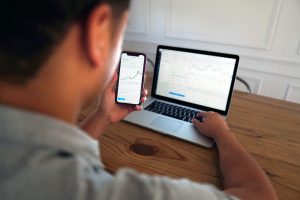Forex trading is a highly volatile market that requires constant monitoring and analysis to make profitable trades. However, with the advancement of technology, automated trading systems have been developed to help traders overcome the challenges of trading. One of these systems is the forex robot, which is a computer program that automates forex trading based on set rules and strategies. In this article, we will discuss how to program forex robot to automate your trading.
Step 1: Define your trading strategy
The first step in programming a forex robot is to define your trading strategy. This involves identifying the indicators, signals, and rules that you will use to make trading decisions. Your strategy should be based on your trading goals, risk tolerance, and trading style. Some of the common indicators and signals used in forex trading include moving averages, Bollinger bands, MACD, and RSI. Once you have defined your strategy, you can proceed to the next step.
Step 2: Choose your programming language
The next step is to choose the programming language that you will use to program your forex robot. Some of the popular programming languages used in forex trading include MQL4 and MQL5. MQL4 is used to program forex robots for the popular MetaTrader 4 platform, while MQL5 is used for MetaTrader 5. You can also use other programming languages such as Python, C++, and Java.
Step 3: Write your code
Once you have chosen your programming language, you can start writing your code. Forex robots are typically written using a combination of technical indicators, trading rules, and money management strategies. The code should be designed to automate your trading strategy and execute trades based on the rules you have set. You can use the built-in functions and libraries provided by the trading platform or create your own functions.
Step 4: Test your forex robot
After writing your code, you need to test your forex robot to ensure that it works as expected. You can use historical data to backtest your robot and see how it performs in different market conditions. This will help you identify any bugs or issues in your code and fine-tune your strategy. You can also use a demo account to test your robot in real-time trading conditions before going live.
Step 5: Deploy your forex robot
Once you have tested your forex robot and are satisfied with its performance, you can deploy it for live trading. You can do this by uploading your code to the trading platform and setting up the parameters for your robot. These parameters include the lot size, stop-loss and take-profit levels, and the maximum number of trades per day or week. You should also monitor your robot’s performance regularly and make adjustments as needed.
Conclusion
Automated trading systems such as forex robots can be a valuable tool for traders looking to automate their trading and take advantage of market opportunities. By following the steps outlined above, you can learn how to program forex robot and create a system that fits your trading style and goals. However, it is important to remember that forex trading carries a high level of risk, and you should always use proper risk management strategies to protect your capital.





